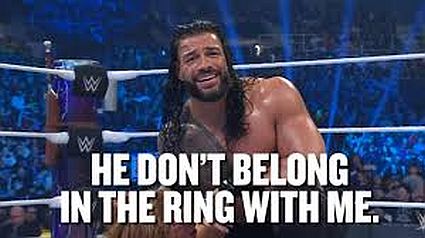Another piece of nonsense by a guru found its way into my feed today. It started with, “The secret to pitching isn’t making yourself look good, it’s making your competitors look silly.” It was followed by one a 21 page carousel outlining how to make your competitors look silly. And, as usual, 100’s of likes and comments, “The secret to success!”
It is pure nonsense. Interestingly, the focus of attention from this expert is the competitor and not the customer. I always thought I the focus of our efforts was on our customers! But in the 21 pages of wisdom imparted by this guru, the word “customer/client” was mentioned only 4 times, while the rest of the text focused on ways of “belittling” and making competitors look silly.
You might be thinking, “Dave, if this is such nonsense, why are you whining about it, why are you writing a post? You just need to move on!”
But it struck me, we really don’t understand how to deal with competitors in our work with customers. Too often, we feel threatened by them, we fear them. As this post unwittingly points out, too many people make the competitors the center of the customer’s focus through their own efforts in attacking them, trying to make them look bad, or trying to make ourselves look good.
Inevitably, these efforts make us look bad–in the customer’s eyes.
And given the state of current selling, I suspect too many competitors do a fantastic job of making themselves look bad without our help. Hopefully, they are among the group high-fiving the author of the aforementioned post. They focus on their products, features, functions, feeds, speeds. “Look at our comparison charts, we check more boxes than they do, plus we can give you a discount!”
What if we adopted different strategies about how to deal with the competition? Here are some thoughts:
It turns out what we sell is far less important to our customers than how we sell—or, more importantly, how we help them navigate their change/buying process effectively and efficiently. Attacking and making our competitors look silly does not contribute to making our customers more successful, particularly when any alternative on their short list is likely to work. Stated differently, customers aren’t stupid in selecting shortlist alternatives.
300% of our focus needs to be on our customers. Helping them better defined and understand what they are trying to do, helping them navigate their change/buying process, helping them make a a high confidence decision on what they are trying to achieve. We already know they struggle with this, and the majority of time they fail.
We, also, know they don’t view sellers as being helpful in this process. Let the competition do what they will in not helping the customer, we stand out and are differentiated when our focus is only on the customer!
This doesn’t mean we ignore the competition. But demeaning them is, actually, making the customer look bad. The customers are considering the competition for a reason. What is it that made them consider the competition? What is it they like about the competition? Where do they see the competition as being different?
These conversations aren’t really about the competition and how we might or might not be better, but it’s through understanding what our customers see in the competition, that we better understand our customers and what they are trying to achieve. Maybe we’ve missed something. Maybe we’ve misunderstood something. Our customers are considering the competition for a reason and understanding those reasons helps us understand and help the customer in ways that are more impactful.
Having competitors can actually be helpful, because understanding the customer’s interest in those competitors helps us better understand and help the customer. Absent competition, we and the customer may be missing something.
And, if, after all of this, the customer chooses the competitor, what happens? If we have gone through the process of trying to help the customer navigate the buying process. If we have done everything to help the customer make a decision with confidence and the customer chooses a competitor, they have probably done the right thing for themselves–it just happens they aren’t doing it with us.
What can we learn about it? Did we miss something, could we have changed our approach? Is there something about our offerings or at least how they perceive our offerings that needs to be changed? How do we take that knowledge and move forward as we engage new customers?
Competing is part of selling. The customer is always looking to make a decision in which they have high confidence. Our job is to be their leader in helping them make that decision.
Afterword: Here is the AI generated discussion of this post. Enjoy!

Leave a Reply